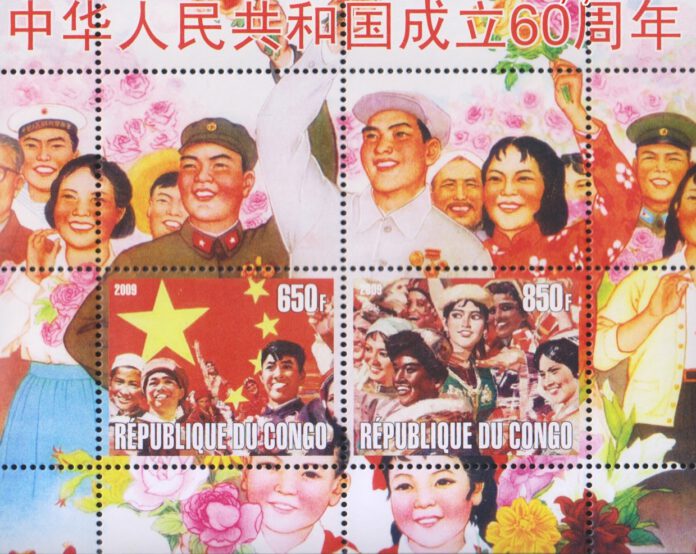
At the beginning of the founding of the PRC, under the influence and constraints of domestic and foreign situations, the relationship between China and Africa only developed in-depth after the Asia-Africa Conference.
Since 1951, the CPC has begun to link the national liberation movements in Asian and African countries with the issue of the external environment of China’s revolution and construction and has actively paid attention to the development of national liberation movements on the African continent.
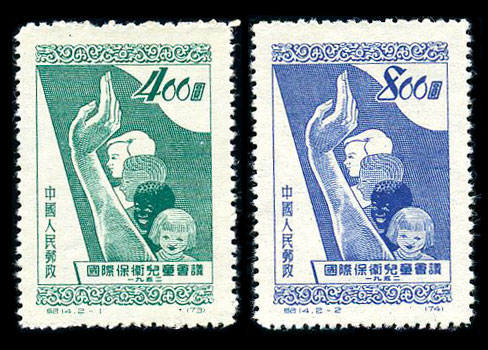
Then in 1952, China’s Ministry of Posts and Telecommunications(MPT) issued two stamps of the International Conference for the Defense of Children, featuring a huge and robust arm guarding children, including African children design, of different colors from all over the world, implying that children are protected.
Further Development of China-Africa Relations
From April 18 to 24, 1955, the Asia-Africa Conference was held in Bandung, Indonesia. It was the first large-scale international conference of Asian and African countries and regions without the participation of colonial powers.
Since then, China has actively developed friendly exchanges with African countries, and in the 1950s and 1960s, China established diplomatic relations with dozens of young countries on the African continent.
In 1959, China’s MPT issued three stamps. The second stamp shows three hands of white, yellow, and black colors holding a red flag with the words Proletarians of the World Unite, with the lower part of the red flag inserted on the earth, indicating that the people of Africa and the people of all countries in the world are united in their struggle for independence and freedom.
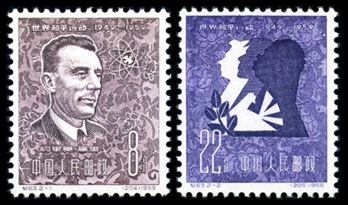
In July of the same year, to commemorate the 10th anniversary of the First World Congress for the Defense of Peace, China’s MPT issued stamps. In the center of the 22-cent stamp design is a silhouette of the head of a person of yellow, white, and black skin colors, with a white dove of peace resting on their chests, and an olive leaf decoration next to the dove, symbolizing the unity and common struggle of the peoples of the world for a peaceful and beautiful life.
China-Africa Relations in the 1960s
Around 1960, the Western countries, represented by the United States, persisted in their isolation and blockade policy against China, while the Soviet Union, which was once close to China and belonged to the same socialist camp, began to be at odds with China.
Meanwhile, the national liberation movement in Africa had unprecedented development. At the time of the 1955 Asian-African Conference, there were only four independent countries in Africa, but by the end of 1963, the number had increased to 34.
After emerging as a major political force on the international stage, to break the monopoly of the Western Powers on sports, the first Games of the New Emerging Forces (GANEFO) were held in Jakarta, Indonesia, from November 10 to 22, 1963, with the participation of 2,404 athletes from Asia, Africa, Europe and Latin America.
The GANEFO broke the monopoly of the Western powers on sports, inspired the fighting spirit of the newly independent countries to fight for equal rights, and the international sports arena has brought a new atmosphere in the world that has caused a shock.
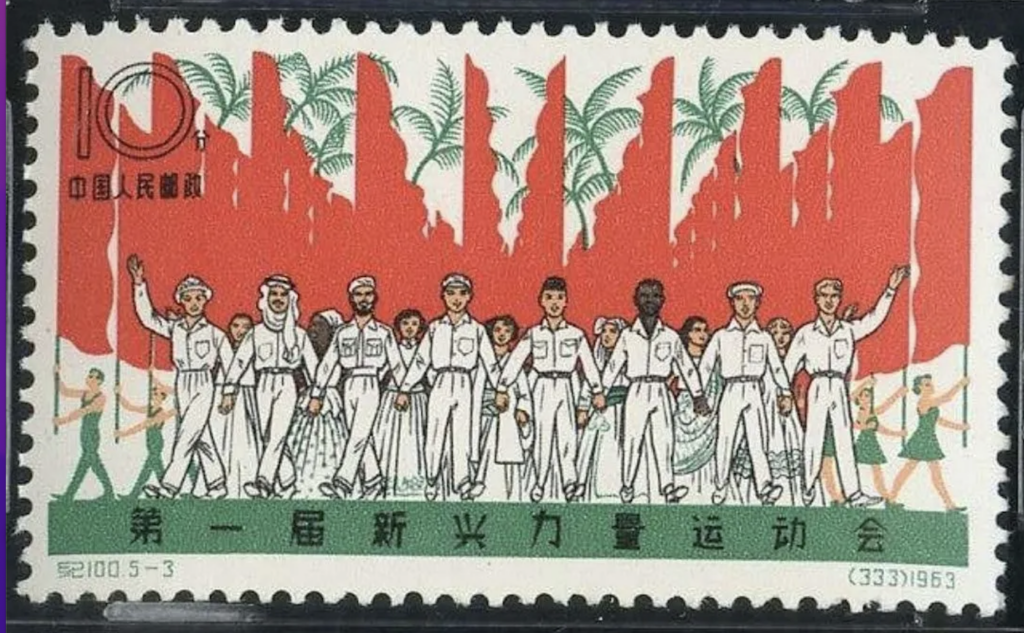
On November 17, 1963, to congratulate this victory, China’s MPT issued the stamps of Chronicle 100. The only 10-cent stamp features athletes of different skin colors walking hand in hand.
To develop diplomatic relations with the newly independent countries, from December 1963 to February 1964, Premier Zhou Enlai and his delegation visited 10 African countries, including Egypt, Algeria, Morocco, Tunisia, Ghana, Mali, Guinea, Sudan, Ethiopia, and Somalia.
It was the first time that a national leader of the RPC made an official friendship visit to an African country. In the course of the visit, Premier Zhou Enlai declared the Five Principles for the Development of State Relations with African Countries and the Eight Principles for China’s Foreign Economic Assistance.
The formulation of these principles fully embodies China’s sincere desire to engage in economic and cultural cooperation with a vast number of Asian and African countries based on mutual respect, equality, and benefit.
In the following four decades, most African countries established normal diplomatic relations with China. Since then, African elements have appeared more frequently on China’s stamps.
China’s MPT issued stamps in 1964 and in 1965, to celebrate the sixth anniversary of the African Freedom Day, and to commemorate the 10th anniversary of the Bandung Conference respectively.
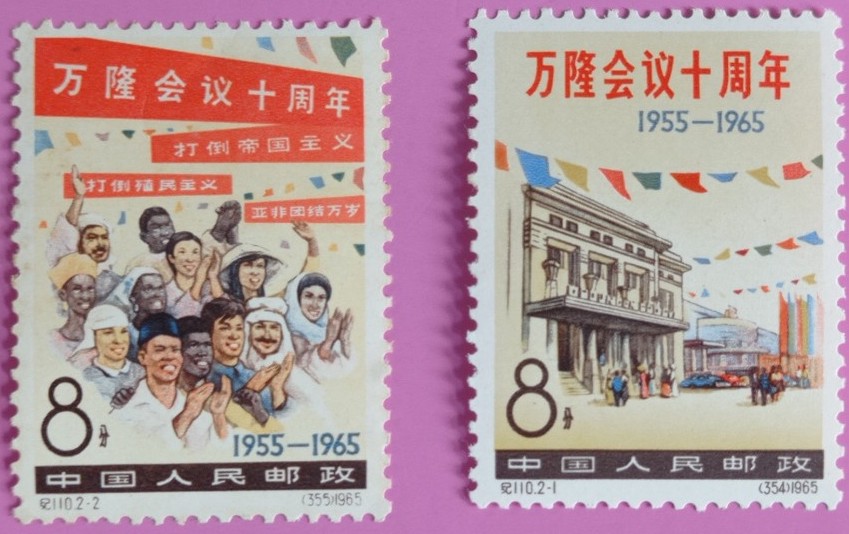
In the 1960s, despite its economic difficulties, China actively helped African countries to develop their economies and provided material and technical assistance. With China’s help, many African countries have flourished, their economies have developed rapidly, they have begun to get rid of poverty and hunger, and the process of industrialization has been steadily advancing.
For example, in the 1960s and 1970s, China agreed to help build the Tanzania-Zambia Railway. The railroad starts from the capital of Tanzania, and crosses 976 kilometers in Tanzania, then enters 884 kilometers in Zambia, and joins with the old railroad in Zambia, with a total length of more than 1,860 kilometers, and passes through the section of the road with complicated terrain and arduous construction.
In 2006, Tanzania Post and Zambia Post jointly issued a set of stamps to celebrate the 30th anniversary of the opening of the railway. To commemorate the 35th anniversary of the establishment of diplomatic relations between China and Tanzania, China’s MPT issued a commemorative cover in 1999, on which the commemorative stamped design is that of the Tanzanian Railway.
In July 1962, Algeria formally declared its independence, and soon China’s MPT issued a set of special stamps entitled Support for Algeria’s National Liberation Struggle.
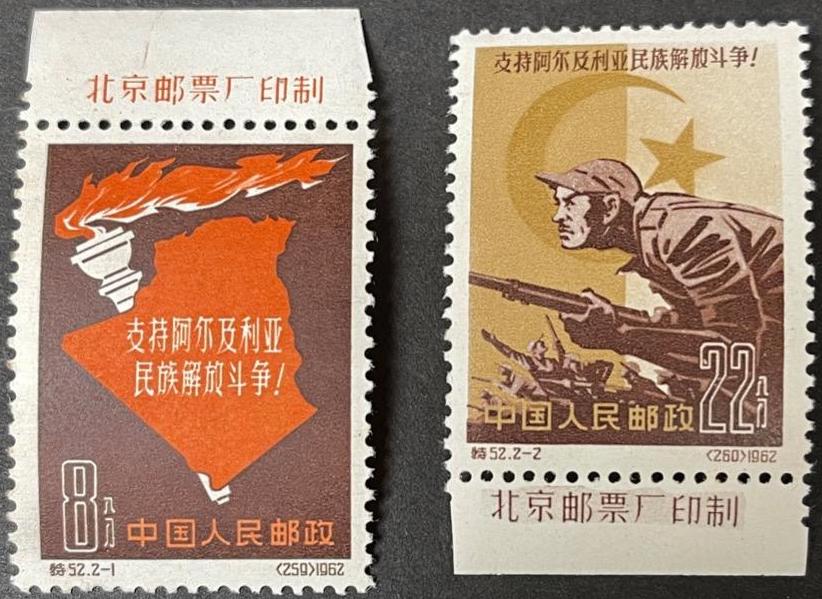
Plus, Chairman Mao Zedong has always supported African Americans in their struggle against racial discrimination. In 1968, China’s MPT issued a stamp that features a portrait of Chairman Mao Zedong and an excerpt from a statement in which Chairman Mao Zedong calls on workers, peasants, revolutionary intellectuals, and all those who oppose U.S. imperialism to take action and give the strongest support to the African-American struggle against racial discrimination.
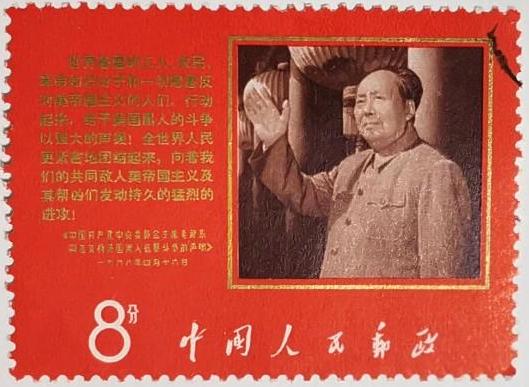
Table Tennis Diplomacy in the 1970s
In November 1971, The Asian-African Table Tennis Invitational Tournament was held in Beijing, in which table tennis teams from 51 Asian and African countries and regions participated. China’s MPT issued stamps to celebrate the success of the event.
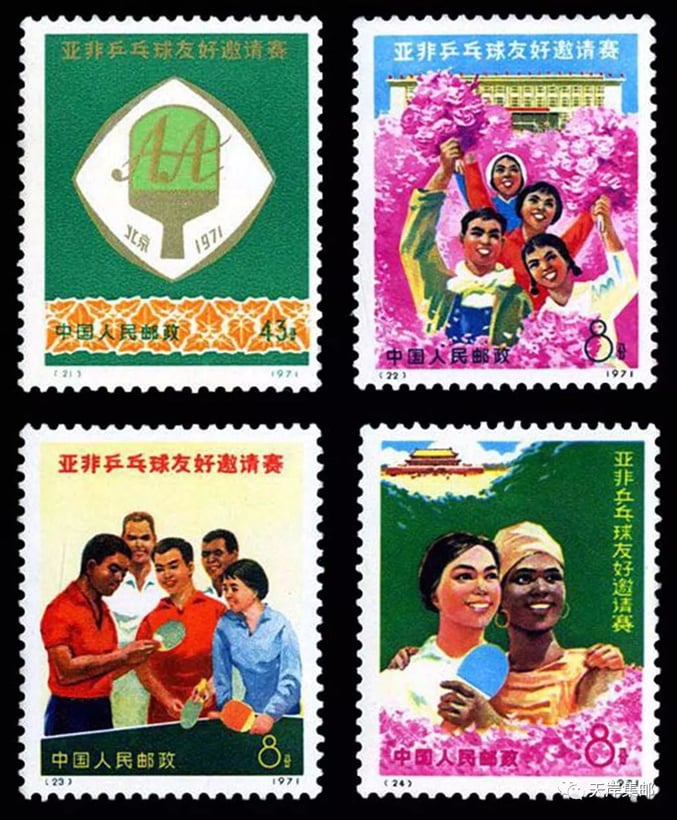
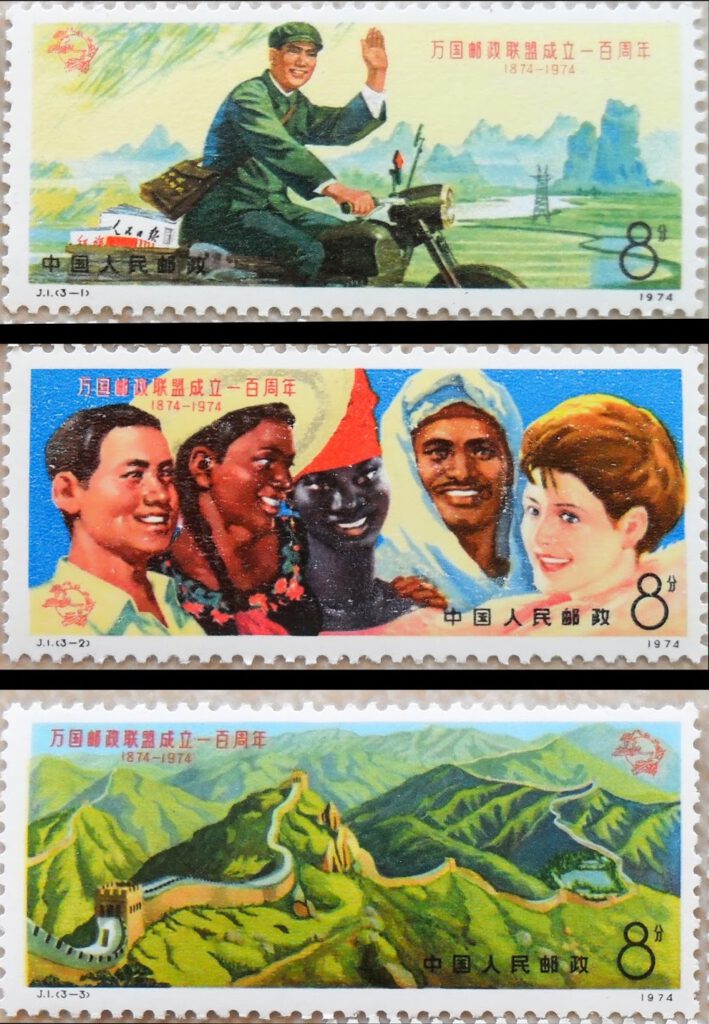
In 1972, China resumed its legal seat in the Universal Postal Union. In 1974, on the occasion of the 100th anniversary of the founding of the Universal Postal Union, China’s MPT issued stamps, and the second stamp depicts five figures of different nationalities and skin colors, smiling and close together, with an African figure in the center.
(Source: China’s MPT, Chinese Stamps Info, Carousell)



